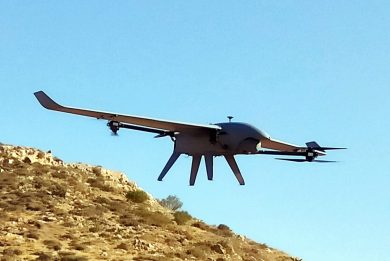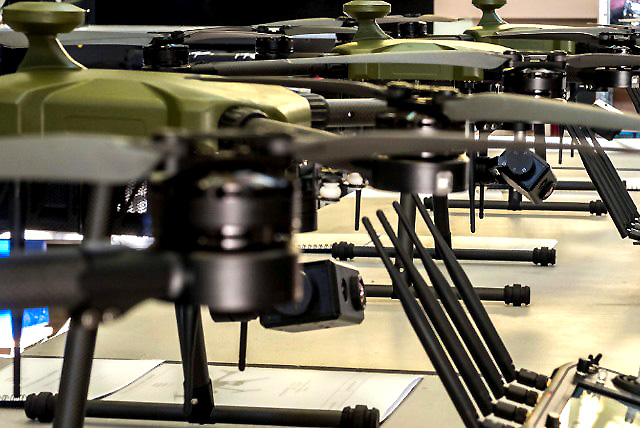
DEFEA 2023 – Altus adds new cargo UAS to its family of drones in service with Greece
At DEFEA Altus, the main provider of small UAS to the Hellenic Armed Forces, introduced a new cargo UAS alongside its family of VTOL drones
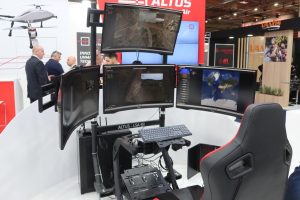
Involved in many European programmes, the company based a few kilometres northeast of Athens was showing at the Athens exhibition its M3NTOR netcentric hierarchical Command, Control and Communication system that was designed to exploit data coming from multiple sensors, ranging from optronics installed on UAS to radars. The M3NTOR fully exploits the la test technologies, such as artificial intelligence and machine learning that provide operational planning assistance and advanced decision making capabilities. The live demonstration allowed observing the exploitation of the data provided by two Altus UAS, one flying over Marathon while the second was flying close to Crete.

One of those was an Atlas 4, a light quadcopter UAS with a maximum take-off mass of 15.2 kg, which can carry a 6 kg payload. When folded the Atlas 4 has a very small footprint, 460x460x490 mm, width and length increasing to 810 mm when ready for flight. Its four rotors are activated by electric motors powered by two lithium 22.2 V batteries with a 22.000 mAh capacity allowing for endurance between 60 and 84 minutes. The Atlas 4 can fly at a maximum speed of 18 m/s (65 km/h) and cope with winds up to 10 m/s, its ceiling being 9,000 ft above sea level. In line-of-sight its encrypted data link range is 30 km, this working on the 2.4 GHz frequency. Navigation is provided by a GNSS system exploiting both GPS and GLONASS. The Atlas 4 is in service with the Hellenic Army that deploys two such UAS operating on board naval vessels mainly for Search And rescue missions. To this end the Atlas 4 standard protection against liquid agents is IP43 (protection against water sprinkled at 60°) but this can be elevated to IP55 (protection against water jets from any direction).
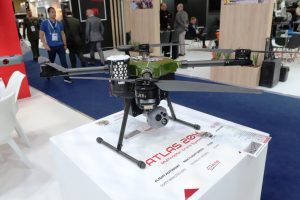
The other system in service wit the Army is the Atlas 204, a smaller UAS with a maximum take-off mass of 11.7 kg and a 3 kg payload. The Hellenic Army acquired 32 such quadcopters that are deployed on the Greek islands to ensure monitoring. With a 230x230x400 mm footprint folded becoming 630x630x400 when operational, the Atlas 204 uses the same batteries of the Atlas 4 that ensure a 55 to 70 minutes operational endurance. Envelope parameters are similar to those of the bigger UAS, however its speed is higher, 23 m/s (82 km/h) and it can withstand stronger winds, up to 15 m/s. Should the Atlas 204 lose contact wit the ground control station, a parachute allows to safely recover it.
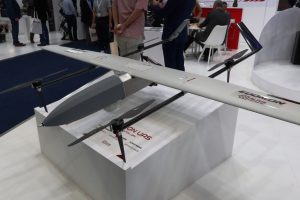
Should a military, law enforcement or civilian service need a long endurance ISR asset, Altus developed the Edomon, a hybrid UAS with a fixed wing with a 3,000 mm span and four rotors; the latter are activated by electric motors, while a two-stroke thermal engine fuelled with 95 RON [1] 40:1 mix activates a two-blade pushing propeller allowing for a six hours endurance at cruise speed, maximum speed being 120 km/h. Maximum take-off mass is 18 kg, of which 2.3 kg are the useful payload, 4 kg being the fuel load. Maximum range is 100 km, while ceiling is 10,000 ft.
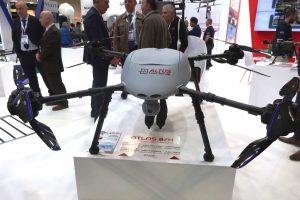
The last product by Altus is still under development and should be finalised in a few months. A cargo UAS, the Atlas 8 Heavylifter has a maximum take-off mass of 90 kg, with a 40 kg payload and a 155 litres payload volume. Its architecture sees four couples of counter-rotating rotors installed at the extremity of four spars protruding at 90° from the fuselage, with a high landing gear to allow installing the payload under the fuselage. It can fly for a maximum of 25 minutes reaching a 30 km range, to deliver its load that in the military might be ammunition, batteries, medical or other types of supplies. Altus has won a tender with the Hellenic Army and will deliver it integrated on a military van. Another system will be provided to a public authority in Crete.
[1] Research Octane Number
Photos courtesy Altus and P. Valpolini


